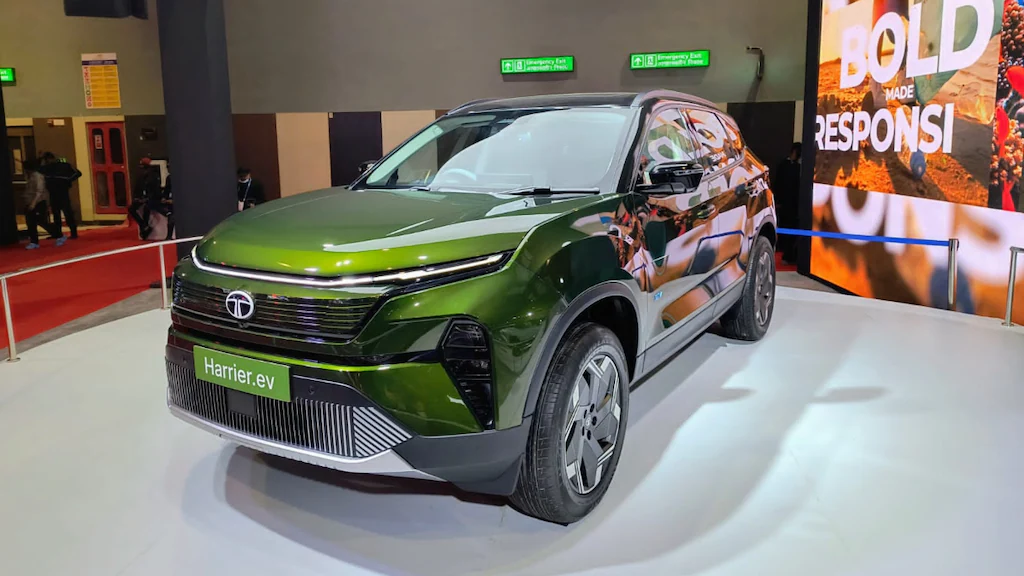EV Funding Drops 37%: Can India’s Electric Revolution Bounce Back in 2025?
India’s electric vehicle (EV) sector, once a beacon of rapid growth and innovation, has hit a speed bump. Funding for the industry has dropped sharply, declining by 37% from $934 million in 2022 to $586 million in 2024, according to Venture Intelligence data. This decline, coupled with slower sales growth and policy changes, has created a cautious investment environment.
However, despite these challenges, the EV sector remains optimistic about the future. With the government’s PM-E Drive Scheme, advancements in battery technology, and a growing focus on infrastructure, the industry is gearing up for a transformative 2025. Let’s take a closer look at the current state of the EV sector, the challenges it faces, and the opportunities that lie ahead.

Why EV Funding Declined: Policy and Market Challenges?
1. Transition from FAME-II to PM-E Drive Scheme
Government policies have always been a key driver of the EV sector’s growth. The introduction of the PM-E Drive Scheme in October 2024 marked a significant shift from the FAME-II program, which had provided higher subsidies.
Under the PM-E Drive Scheme:
- Subsidies for electric two-wheelers are capped at ₹5,000 per kWh, with a maximum of ₹10,000 per vehicle.
- Subsidies for electric four-wheelers and hybrid vehicles have been excluded entirely, impacting original equipment manufacturers (OEMs).
In contrast, FAME-II had offered subsidies of ₹15,000 per kWh, covering up to 40% of a vehicle’s cost, which was later reduced to ₹10,000 per kWh in 2023. The reduced incentives under the new scheme have made EVs less attractive to some buyers, slowing sales growth.
2. Slower EV Sales Growth
While EV sales in 2024 reached 1.9 million units, representing a 24.5% increase from 2023, this growth pales in comparison to the 50% surge seen between 2022 and 2023.
The electric two-wheeler segment, which includes major players like Ola Electric, accounted for 1.13 million units in 2024, up from 860,000 units in 2023. However, the overall slowdown in growth has made investors more cautious, prioritizing profitability and unit economics over aggressive expansion.


Key Investments Amid the Funding Decline
Despite the overall decline in funding, the sector has seen some high-profile deals:
- Ather Energy raised $71 million from the National Investment and Infrastructure Fund (NIIF), achieving unicorn status and setting the stage for an upcoming IPO.
- Battery Smart, a leader in battery swapping, raised $65 million at a $340 million valuation in a funding round led by LeapFrog Investments.
These deals highlight the growing interest in emerging areas like battery swapping, charging infrastructure, and component manufacturing, which are seen as critical to the sector’s long-term growth.
Opportunities for Growth in 2025
1. Battery Swapping Gains Traction
Battery swapping is emerging as a game-changer for commercial applications like quick commerce and food delivery. Battery Smart, for instance, surpassed 55 million swaps last month and is conducting over 100,000 swaps daily. This model addresses range anxiety and reduces downtime, making it an attractive solution for businesses.
2. Focus on Charging Infrastructure
The PM-E Drive Scheme allocates significant resources to establish charging infrastructure, a critical component for EV adoption. The government’s focus on building a robust network of charging stations will make EVs more practical for everyday use, especially in tier-2 and tier-3 cities.
3. Emerging Business Models
Innovative business models like Vehicle-as-a-Service (VaaS) and Battery-as-a-Service (BaaS) are gaining traction. These models reduce the upfront cost of EV ownership, making them more accessible to a broader audience.
4. Domestic Manufacturing Push
The PM-E Drive Scheme also emphasizes enhancing the domestic EV manufacturing ecosystem. By supporting local production of batteries, components, and vehicles, the government aims to reduce dependency on imports and create jobs in the sector.
What is the PM-E Drive Scheme?
The PM Electric Drive Revolution in Innovative Vehicle Enhancement (PM-E Drive) scheme was launched on October 1, 2024, with a budget of ₹10,900 crore. The scheme aims to:
- Provide demand incentives for electric two-wheelers, three-wheelers, e-buses, and e-ambulances.
- Establish essential charging infrastructure.
- Streamline the subsidy process through an e-voucher system, which reduces the upfront cost of EVs for customers.
The scheme will run until March 31, 2026, and is expected to play a pivotal role in driving EV adoption in India.

The Road Ahead: What to Expect in 2025
Despite the challenges of 2024, the Indian EV sector is poised for a strong comeback in 2025. Here’s what we can expect:
- Increased Focus on Profitability: Investors will prioritize startups with proven business models and a clear path to profitability.
- Technological Advancements: Innovations in battery technology, such as solid-state batteries, will address range anxiety and improve vehicle performance.
- Policy Support: The PM-E Drive Scheme will provide much-needed incentives for two- and three-wheelers, while also boosting infrastructure development.
- Sustainability Goals: The government’s target of 30% EV penetration in new vehicle registrations by 2030 will continue to drive optimism and investment in the sector.
A Transformative Year Ahead
While 2024 was a challenging year for India’s EV sector, it also laid the groundwork for future growth. The transition to the PM-E Drive Scheme, coupled with advancements in technology and infrastructure, is expected to drive the industry forward in 2025.
As investors shift their focus to emerging areas like battery swapping and charging infrastructure, the sector is set to become more resilient and sustainable. With strong government support and a growing emphasis on innovation, 2025 could mark a turning point for India’s EV revolution.


